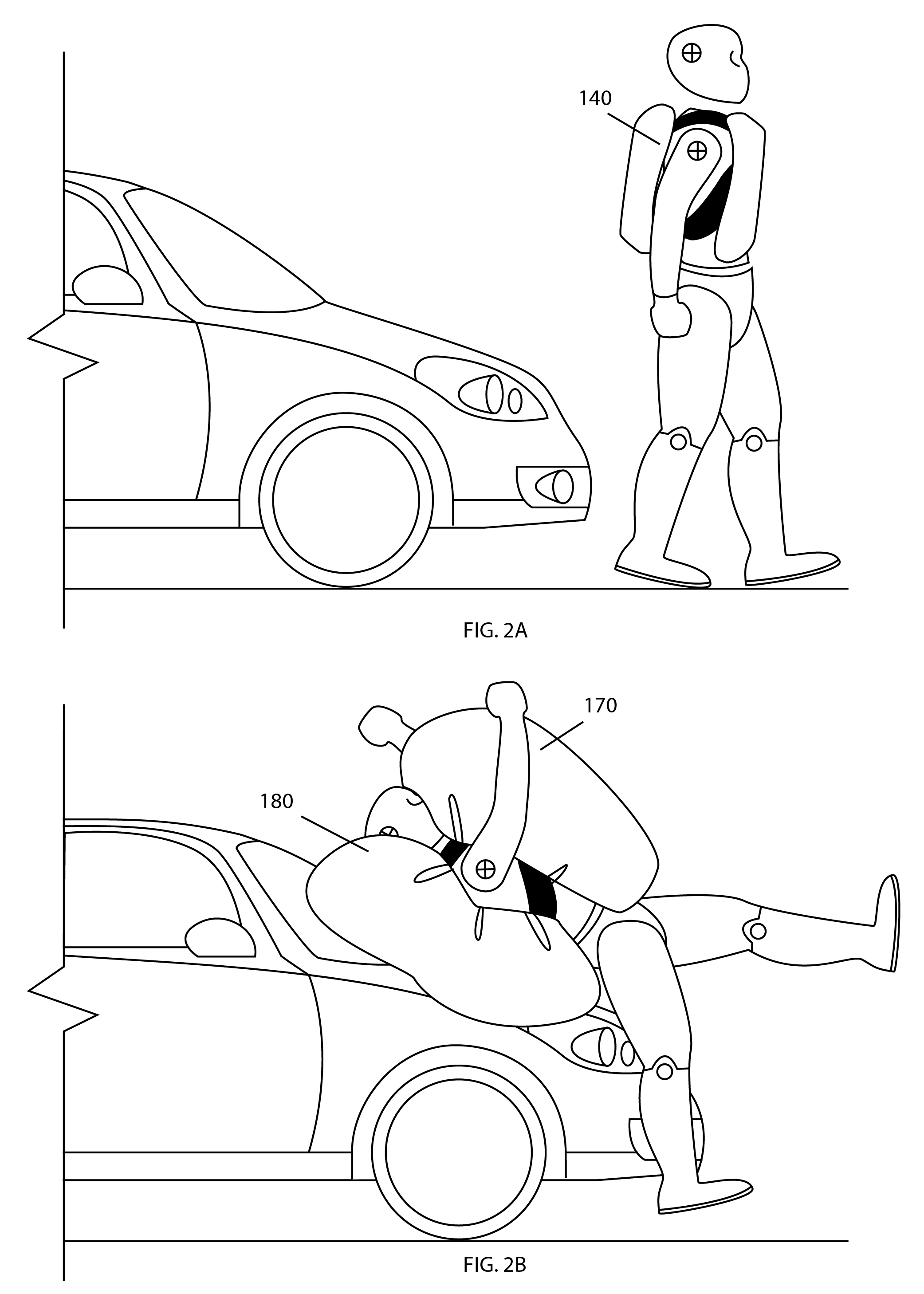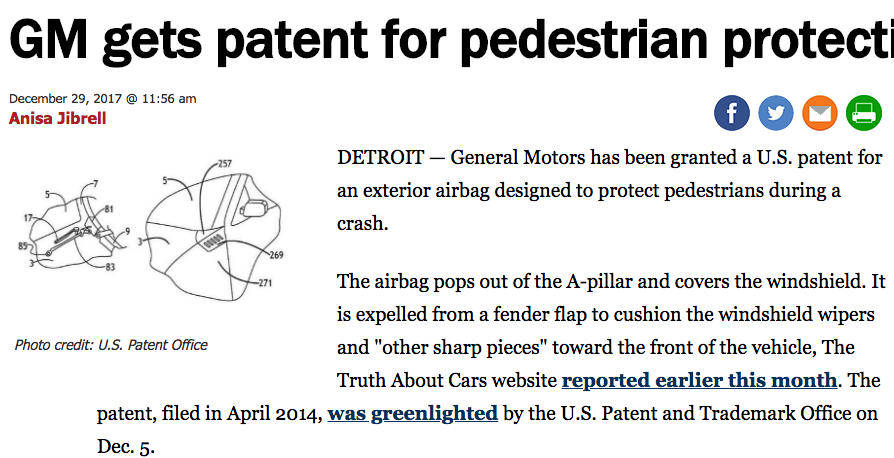What the obsession with technological fixes says about how we fail to prioritize people in cities
In the best traditions of engineering, clever minds are working on new technologies that can prevent or reduce the carnage on our nation’s roadways. A couple of years ago, we note that Google had patented a technology to coat self-driving cars with a special adhesive that would cause any pedestrians the vehicles struck to adhere to the car rather than being thrown by the impact.
Appalled, and with tongue firmly in cheek, we offered up three of our own equally absurd technological fixes for the pedestrian “problem,” including vehicle-activated shock bracelets that would paralyze pedestrians before they could jay-walk, rocket packs that could lift errant pedestrians out of a vehicle’s path, and perhaps most fancifully, pedestrian mounted air-bags, that could cushion pedestrians struck by vehicles.

But, as is often said, truth is stranger than fiction. Because its now apparently the case that General Motors (and several other automobile manufacturers) are patenting passenger airbags, although their concept is that the airbags be mounted on the outside of vehicles, rather than on the pedestrian. Here’s the drawing for GM’s idea, from the Automotive News:
Ultimately, the purpose of such technologies is not to make cities safer for people, but to make them more universally available to cars and car travel. It acknowledges that we’re going to design our urban space around stroads that inherently put fast-moving cars in conflict with people on foot. It has long been the case with private vehicle travel that we’ve demoted walking to a second class form of transportation. The advent of cars led us to literally re-write the laws around the “right of way” in public streets, facilitating car traffic, and discouraging and in some cases criminalizing walking. We’ve widened roads, installed beg buttons, and banned “jaywalking,” to move cars faster, but in the process making the most common and human way of travel more difficult and burdensome, and make cities less functional.
Everywhere we’ve optimized the environment and systems for the functioning of vehicle traffic, we’ve made places less safe and less desirable for humans who are not encapsulated in vehicles. A similar danger exists with this kind of thinking when it comes to autonomous vehicles; a world that works well for them may not be a place that works well for people. As CityLab’s Eric Jaffe pointed out, “it would be a huge mistake for cities to undo all the progress being made on human-scale street design just to accommodate a perfect algorithm of car movement.”
Not all of our problems can be solved with better technology. At some point, we need to make better choices and design better places, even if it means not remaking our environment and our communities to accommodate the more efficient functioning of technology.
Thanks to Matt Cortright for providing the diagrams for our proposed pedestrian protection devices.


